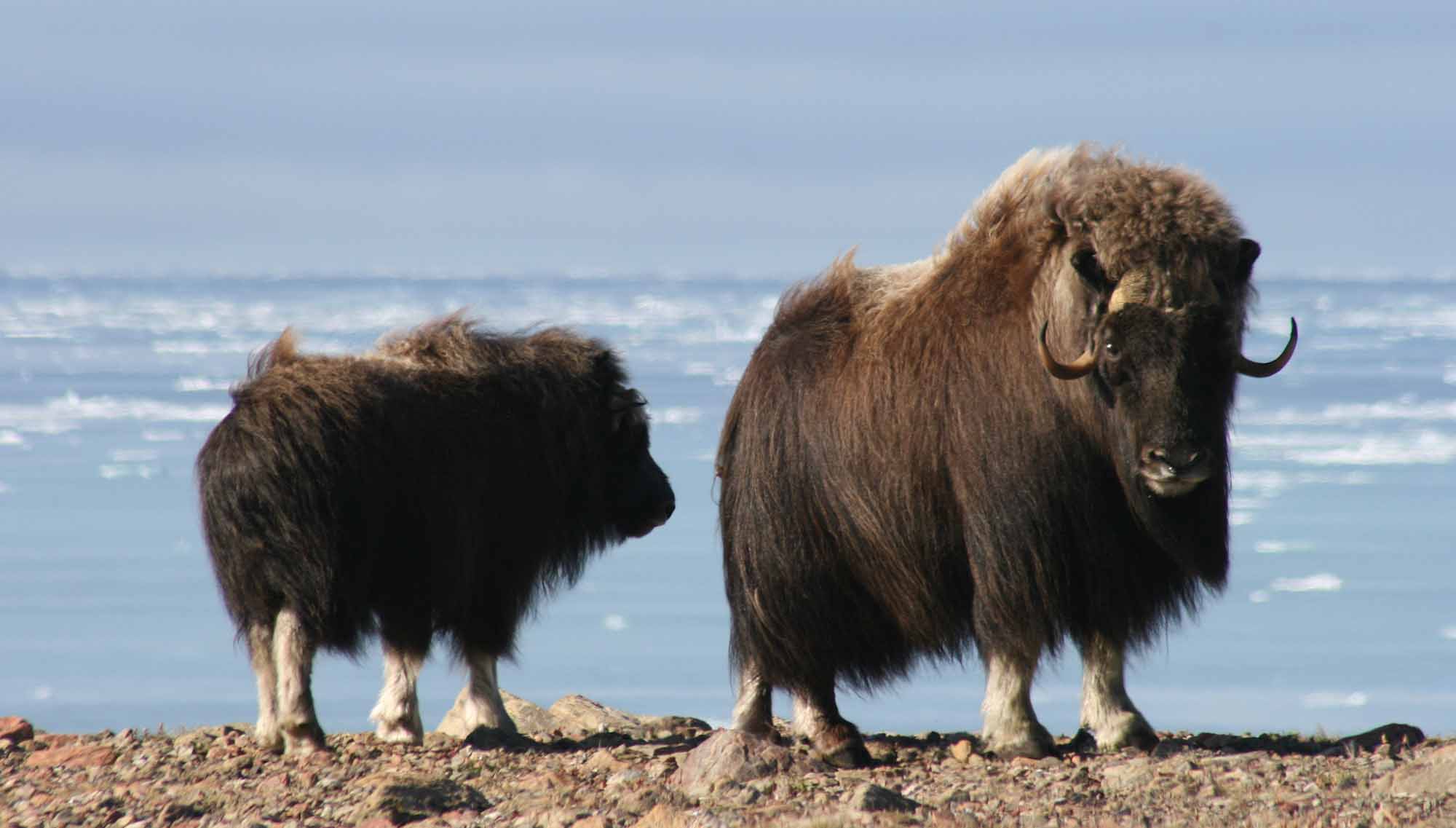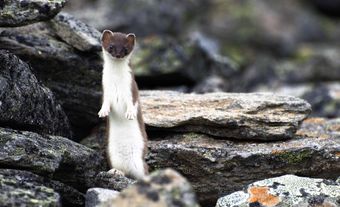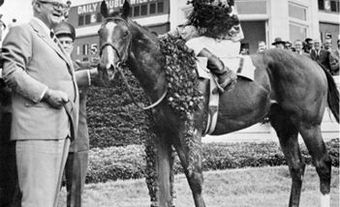Artiodactyla is an order of even-toed mammals that walk on their toenails (unguis). This and the other order of hoofed mammals, the Perissodactyla, are collectively called ungulates. The order Artiodactyla contains 195 species of predominantly herbivorous mammals grouped into families that contain pigs, peccaries, hippos, camels, mouse deer, deer, giraffes, pronghorns, and the family that contains cattle, sheep, goats and bison.
Description
The feet are the characteristic feature of the group; the axis of leg support passes between the third and fourth digits, which support most of the animal's weight. What would be "digit 1" is always absent. Digit 2 and in some species digit 5 (the lateral digits) may be reduced or absent. The most diagnostic bone in the skeleton, the astragalus (talus), has pulley-like upper and lower surfaces. This enhances hind limb flexion and extension while completely restricting lateral movement. The combination allows artiodactyls to rise quickly, hindquarters first.
The distinctive astragalus is regarded by some as a key to the success of the order as it allows the powerful propelling muscles of the hind limbs to be activated faster upon rising than in perissodactyls. The astragalus of the perissodactyl restricts hind limb movement so the animal must rise front-end first, slowing acceleration relative to the artiodactyl, and causing vulnerability should a predator encounter the perissodactyl lying down.
There are 3 recognized suborders: the Suiformes, Tylopoda and Ruminantia.
Suiformes
The Suiformes include the families of hogs, peccaries and hippos distinguished by having 3 pairs of incisor teeth. The canine teeth, and in hippos the incisor teeth as well, are tusklike.
Tylopoda
The Tylopoda, which include both Old and New World camels, have 1 pair of upper incisors and only 2 enlarged nails on each limb in place of normal hooves.
Ruminantia
Members of the suborder Ruminantia have no upper incisors. All ruminants have a complex 4- or, rarely, 3-chambered stomach. Food is gathered quickly, chewed briefly and swallowed into the first stomach chamber, or rumen. Here, in the warm and moist environment, bacterial breakdown commences. Later, a ball of food, called the cud, is voluntarily regurgitated and chewed, or ruminated, as the animal rests. bacteria in the stomach break cellulose into glucose, create bacterial protein and synthesize some vitamins. The chewed cud is swallowed into the second chamber of the stomach, the reticulum, where further bacterial activity ensues. Next, the food moves to the omasum and finally to the fourth chamber, the abomasum, or digesting chamber, where gastric juices are secreted. Not only do ruminants use the digestible cellular components of their food, but by digesting the bacteria, they access nutrients that would otherwise be indigestible and unavailable.
The ability to derive more energy from a given amount of dry, low-quality herbage, thanks to rumination, has been suggested as a contributing factor in the proliferation of species. Members of the order Perissodactyla, including horses, tapirs and rhinos, were the most abundant ungulate species in the early Tertiary period (65-34 million years ago), but their diversity waned in the Oligocene (34-23.7 million years ago). In the next epoch, the Miocene (23.7-4.9 million years ago), artiodactyl species proliferated as they largely replaced perissodactyls.
Relationship with Humans
Wild artiodactyls provided meat, hides, horn and antler to primitive cultures and serve as game animals to members of modern societies. Most of our domestic livestock come from this order. They furnish us with meat, milk, hides, wool and hair, and serve as beasts of burden in various parts of the world. Artiodactyls were originally absent from the Australian region, Antarctica, and many oceanic islands. They have been introduced as domestic livestock or transplanted as wild species, so widely that there are few inhabited regions outside of Antarctica without artiodactyls today.

 Share on Facebook
Share on Facebook Share on X
Share on X Share by Email
Share by Email Share on Google Classroom
Share on Google Classroom










